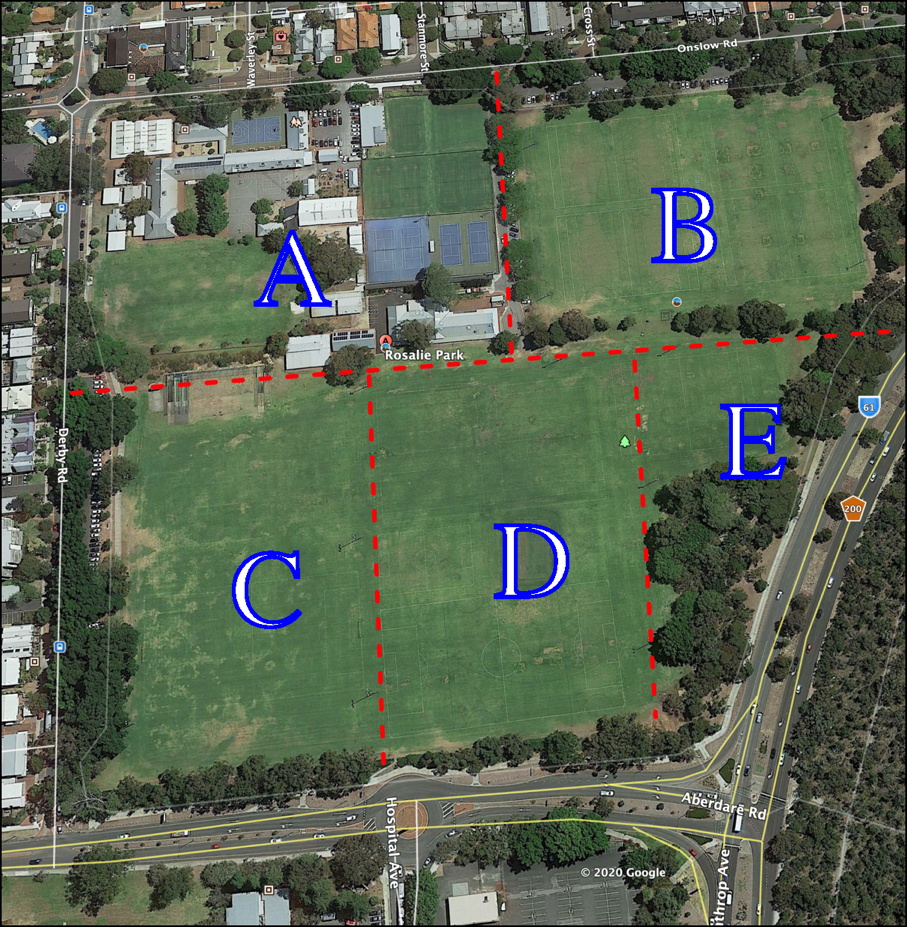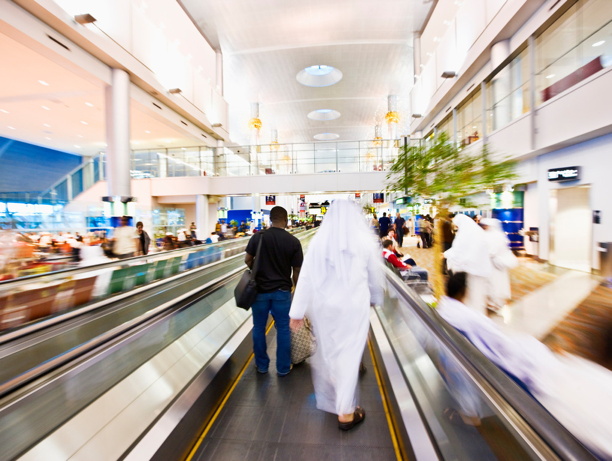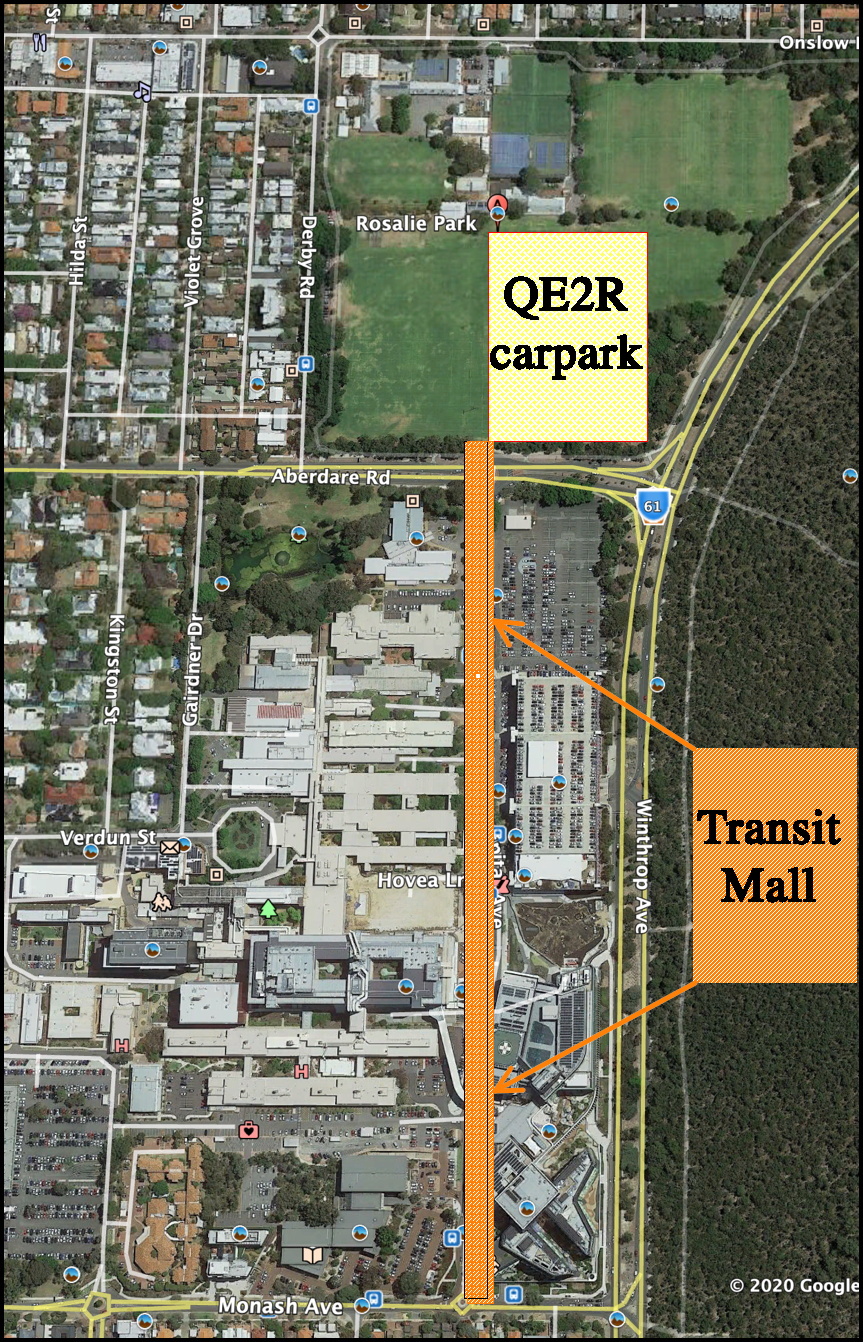David Noel
<davidn@aoi.com.au>
Ben Franklin Centre for Theoretical Research
PO Box 27, Subiaco, WA 6008, Australia.
SC005: QE2R Project for parking at QEII Medical Centre
The QE2-Rosalie Parking Solution
This article discusses a solution to QE2 parking which should solve most of the current problems in an economical, socially-acceptable, and environmentally-friendly way. The solution is also capable of expansion in the future, should parking demands increase at that time.
The parking problem at QEII Medical Centre
The QEII Medical Centre in the inner Perth suburb of Nedlands has the usual problems of providing accessible car parking in an ever-growing metropolitan medical facility.
We live in an age when medical services make up a vital part of community expectations, and with increasing life expectancies and improvements in medical techniques, central medical hubs can be expected to grow and grow. With this growth comes increasing staff numbers and the need to accommodate travel by patients, their visitors, and staff to the hub.
In a fairly low-density city such as Perth, much of the personal travel involved is still by car, hence the need to provide car parking. With increasing building pressure on a site, and the accompanying rise in land values, authorities find it difficult to set aside areas for parking to the extent that staff and the public would prefer.
At QEII (pronounced Q-E-2) a multi-storey car park has been built, and ground-level parking provided at many sites in the complex. Even so, parking is not available for all the staff who would like it, parking charges are regarded as high, and the site is generally regarded by visitors and out-patients as a difficult place to visit by car.

Figure SC005-F01. The QE2-Rosalie site in Nedlands. From Google Earth.
Basis of the proposed parking solution
The proposed QE2R project has 2 major components.
1. New car park under Rosalie Park.
Rosalie Park is the green area in the upper right section of Figure 1. It is a recreational area under the control of the City of Subiaco. On the north-west section of the site is a state primary school, Rosalie Primary School, also some built clubrooms. Most of its open area is used for sporting activities, including games such as soccer, hockey and tennis.
Some years back, the Subiaco Council reconfigured the levels of most of the site, essentially standardizing it on two levels. The northern boundary, containing Onslow Road, is naturally at an elevation several metres higher than the southern boundary, which runs along Aberdare Road.
Figure 2 shows a notional division of the Rosalie Park site into sections. The Council's reconfiguration resulted in the northern sections, A and B, at a level (Onslow Level) being higher by several metres than the southern sections, C, D and E, which are all at the same level (Aberdare Level).
The reconfiguration work gave the Council the flexibility of laying out games pitches in various ways. At present, section D contains the equivalent of 3 soccer pitches, with their long sides running east-west -- pitch markings can just be seen in Figure 2.

Figure SC005-F02. Notional divisions of Rosalie Park.
In the QE2R project under description here, the whole of Section D (and possibly the relict section E) is replaced by a multi-storey car park, with its ground floor at the same level as Aberdare Road, and with 2 or 3 underground levels of parking below this. The sports pitches are reconstituted on the roof of the car park, which brings them up to the same level as the northern sections (Onslow Level).
Based as they would be on a constructed surface, the new Section D pitches can be of high technical quality, for example could incorporate underground irrigation. After the initial building disruption is over, the Subiaco Council is left with sports pitches at least as good as those replaced, complying with Rosalie Park's status as a recreational reserve, and these new pitches will be at the same level as the northern sections A and B.
2. Transit Mall under Hospital Avenue.
The second component of the QE2R project would be to construct a pedestrian Transit Mall under the whole length of Hospital Avenue, which runs North-South as the spine of the whole medical complex.
The Transit Mall would be designed for the convenient movement of people throughout the whole of the QE2 complex, and might be similar to the malls found at airport departure gate complexes, probably including travelators (moving walkways). The northern end of the Transit Mall would connect directly to the QE2R Car Park, so that staff, visitors, and outpatients could move easily to all parts of the hospital complex.
The Transit Mall would include connections up to all buildings on both sides of Hospital Avenue. Depending on the volume of people involved, these connections might include ramps, lifts, stairways, and escalators. The Mall would not only provide access to the Hospital facilities, it would also function as safe underpasses for pedestrians, who are currently liable to conflict with vehicles passing along Hospital Avenue.

Figure SC005-F04. Airport departure mall in Dubai. From [2].
As in airport departure malls, the Transit Mall could also incorporate ancillary facilities such as cafes, flower shops, and food stalls, possibly releasing space in adjacent blocks for their main purposes.
Whole-site summary
Figure 5 shows the disposition of the site with the projected QE2R Car Park and the Transit Mall.

Figure SC005-F05. Whole-site summary.
Advantages and Disadvantages of the QE2R Proposal
Advantages.
1. The QE2R Car Park provides plenty of parking space without taking up valuable site space on the QEII precinct.
2. The Transit Mall under Hospital Avenue provides easy, safe, and fast access to hospital buildings.
3. The Subiaco Council end up with high-tech playing surfaces for their sports pitches at Area D.
4. The Subiaco Council can expect to get a good allocation of ground rent each year from the State Government, without any recurring costs to them.
5. The State Government has no investment in land costs for the QE2R parking facility.
6. If, in the future, even more parking space is needed, the scheme can be extended to Rosalie Area C, or even further to Area B.
7. The current Multistorey Carpark, which exits onto Winthrop Avenue, represents a major capital investment and is leased out till 2037 [1]. Nevertheless, if far-future demands for clinical building site space should become critical, this site space could be reclaimed.
8. The Multistorey Carpark has its vehicle entry and exit points on Winthrop Avenue, and the traffic lights there can cause jams with vehicles queueing to enter. The proposed QE2R Car Park has a natural access at the roundabout where Hospital Avenue joins Aberdare Road, a lesser thoroughfare than Winthrop Avenue, and changes to Aberdare Road could incorporate queuing lanes.
9. A possible future extension to Perth's MetroNet rail system would be an underground line from Perth running west along Kings Park Road, south down Winthrop Avenue, then under the QEII Medical Centre and the University of Western Australia, under the Swan River, eventually linking with a route south along Stock Road. Such a route would be a good fit to run under the Transit Mall.
Disadvantages.
1. Apart from the inevitable costs involved, and disruptions at the time of installation, no major disadvantages are currently apparent.
References and Links
[1] Lloyd Gorman. QEII carpark sold for $200m. https://www.pressreader.com/australia/post-newspapers/20200321 .
[2] Enjoy the smooth transit at Dubai. https://www.inkl.com/news/ask-away-enjoy-the-smooth-transit-at-dubai .
* * * * * * * * * * * * * * * * * *

Go to the Social Engineering Home Page

Assembly begun 2020 Jul 29.
Version 1.0. On web 2021 Jan 3. V. 1.1, adjusted for *, 25 Jul 30.
V. 2.0, minor fix, 2025 Oct 17.







